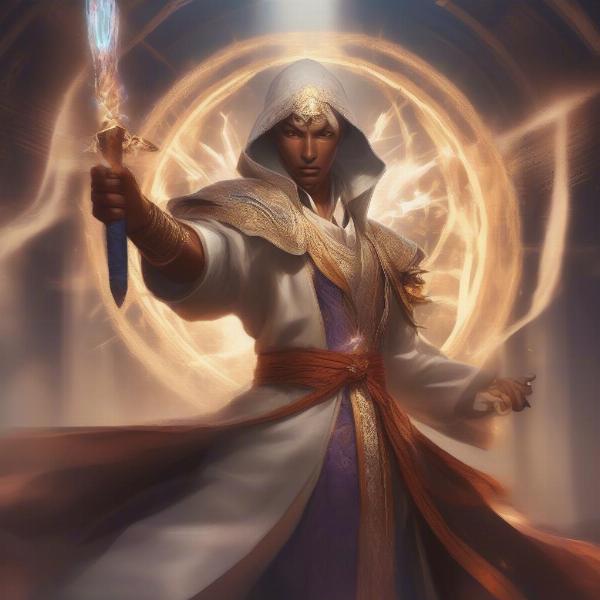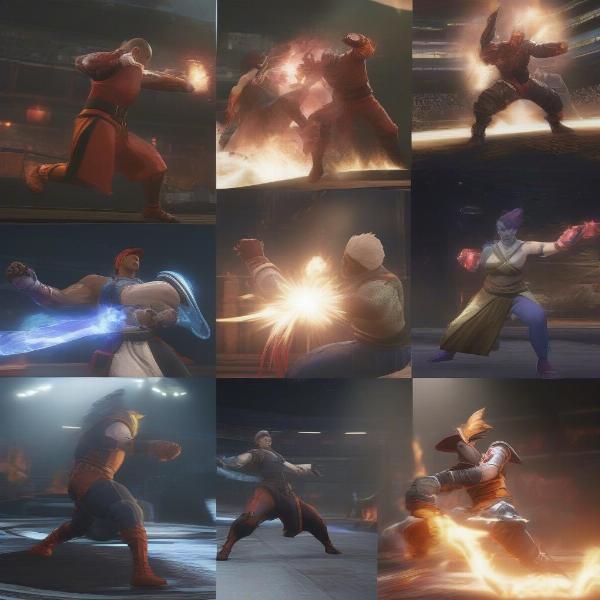The idea of a healer in a fighting game might seem strange at first glance. Fighting games are usually all about dishing out damage, so how could a character focused on healing possibly fit in? At SupremeDuelist.blog, we’re diving into the often-overlooked world of support characters in fighting games, examining the feasibility and design challenges of creating a true healing class in a genre built around direct confrontation.
While most fighting games focus on direct damage, some titles have experimented with characters that bend the typical rules. This article explores these instances and discusses why a full-fledged healer is uncommon, analyzing the balancing act involved in creating such a unique character archetype that can still contribute to the fast paced action of fighting games. We’ll discuss the design challenges, successful implementations, and the future of support roles in the genre.
The Challenge of Healing in a 1v1 Fighting Game
At first thought, a healer character in a fighting game seems almost counterintuitive. The core mechanic of these games revolves around reducing your opponent’s health to zero using a variety of attacks and combos. Adding a character whose primary goal is to restore health introduces several design challenges:
- Time Constraints: Most fighting game matches are short and intense. If a healer character is too effective, matches could become long and frustrating, with players simply healing back any damage they take.
- Balancing Offense and Defense: A healer character that focuses purely on healing would be incredibly vulnerable to direct aggression. They would need to have defensive options to avoid taking damage in the first place and viable ways to contribute offensively.
- Player Frustration: If a healing character becomes too strong, they could lead to matches that feel unfair or drawn out, leading to player frustration. Imagine facing a character that negates all your progress with a simple heal, creating a repetitive and unrewarding experience.
To truly integrate a healing character, the game needs to consider all the ways that the mechanic will impact the game, not only during matches but before they even start.
Are There Fighting Games with Actual Healers?
While not common in classic fighting games, there are a few titles that have experimented with characters that lean towards support and healing. These characters often utilize a mix of other mechanics and focus on enabling allies or protecting their teammates.
Some notable examples include:
- Marvel vs. Capcom Series: Characters like Morrigan Aensland in the Marvel vs. Capcom series has a move that could be classified as healing, but this is typically tied to a resource that has to be gained during a fight. Characters can also use assists to enhance teammates’ abilities.
- BlazBlue Series: Some characters like Rachel Alucard offer a more indirect approach with abilities that buff her team or debuff enemies rather than directly healing.
- Dungeons & Dragons: Tower of Doom: While not a traditional fighting game, the Cleric character could directly heal teammates in this side scrolling beat ’em up.
 a fighting game character with healing abilities
a fighting game character with healing abilities
Why True Healers are Rare in Fighting Games
Traditional fighting games are about direct combat, and healing mechanics are at odds with the pacing and gameplay loop. Most fighting games operate on a rock-paper-scissors system, where each character has strengths and weaknesses in relation to others. It can become difficult to properly slot a healer into that system.
Here’s why full-fledged healing characters are uncommon:
- Pacing: Fighting games prioritize fast-paced action. Healing can slow down matches, turning them into attrition battles.
- Balance: Balancing a character that can both deal damage and heal could prove to be an arduous task. Making the healer too strong and it would quickly become an overused pick, too weak and it would be an irrelevant one.
- Game Philosophy: The core design of most fighting games is about skilled combat and precise execution. Healing, if done passively, may go against the player’s control over their own health.
“The challenge of designing a healer in fighting games is immense,” says Dr. Anya Sharma, a game balance expert. “You have to avoid matches becoming tedious and make the character both viable and engaging, without undermining the core combat loop. It’s a very delicate balancing act.”
How Could a Healer Character Work?
Despite the difficulties, a healer character in a fighting game is not impossible. However, they would need to be implemented very carefully. Here are some ideas on how they might work:
- Conditional Healing: Healing could be tied to successful attacks or specific sequences. This makes healing a proactive and skill-based activity instead of something they can do passively.
- Resource Management: A character might need to build up a resource to heal themselves or an ally. This adds a strategic layer to when they heal during a fight.
- Limited Range: Healing abilities could have a limited range, forcing the character to be strategic with positioning and create openings for healing.
- Utility Over Pure Healing: Instead of just healing, characters could also focus on buffing allies’ attack power, increasing defense, or providing temporary shields and other forms of support.
- Hybrid Approach: Characters that can both heal and inflict damage, though with less efficiency than other specialists, can also be a good approach.
The Role of Support Characters in Fighting Games
Even if a character isn’t a dedicated healer, they can provide support through other means. These include:
- Buffs and Debuffs: Applying buffs to teammates (increased attack, speed, defense) or debuffs to opponents (decreased speed, damage, defense).
- Zoning Tools: Creating zones or areas that can restrict opponent movement or provide an advantage.
- Traps and Setups: Creating set situations that benefit teammates by controlling enemy position or movement.
- Mobility and Positioning: Helping allies move around the arena, repositioning themselves, or allowing them to escape from danger.
 a collage of support abilities in various fighting games
a collage of support abilities in various fighting games
Designing Balanced Support Abilities
The key to successful support characters is to ensure their abilities are balanced, and they require player skill to use effectively. Here are some aspects to consider:
- Risk and Reward: Support abilities should have trade-offs. For example, a powerful heal might require a long animation or some sort of vulnerability period for the character using it.
- Limited Resources: Support characters might have limited resources, such as a cooldown on healing skills or requiring specific conditions to heal teammates.
- Clear Communication: Players should be able to clearly see when an ally is healed or given a buff, and when an enemy is debuffed.
- Counterplay: There should be ways for opponents to counter or mitigate the effects of support abilities. For example, a debuff could be cleared with a specific move.
The Future of Support Roles
As fighting games evolve, we could see more support characters emerge. The evolution may be through the following elements:
- Asymmetrical Characters: The future might hold fighting games with team-based scenarios where characters have specific roles that they excel at, instead of everyone fulfilling the same purpose.
- New Game Modes: New game modes and mechanics could better incorporate support roles. For example, team modes where healers could have a bigger impact, or scenarios where teams have to strategically use the support character to succeed.
- Emphasis on Synergy: Games may become more focused on the synergy and compatibility between different character pairings, highlighting the importance of support roles.
“I believe we’ll start to see more nuanced character designs in fighting games,” says Kenji Tanaka, a fighting game character designer. “The industry will probably move towards more varied roles and mechanics that go beyond just pure damage output. Think beyond mere healing, envision the support potential.”
Frequently Asked Questions
Here are some common questions players have about healing in fighting games:
- Are there any fighting games that have a dedicated healer?
While rare, a few games feature characters with some healing capabilities, though typically as part of a larger support kit. It’s not a core focus in most fighting games. - Why aren’t there more healer characters in fighting games?
The core mechanics of fighting games, focusing on direct combat, makes true healing difficult to balance effectively without disrupting the game’s rhythm. - Can healing work effectively in a fighting game?
It can, if done carefully, and tied to player skill and strategy, such as conditional healing or resource management mechanics.
Can You Design a Healer in a Fighting Game?
To answer our main question: Yes, it’s possible to create a character with healing abilities in a fighting game. However, it will not be as simple as adding a traditional healer from an RPG or MOBA into the game. The main objective will be to create a character that not only heals but also has to carefully consider the timing and use of the moves. This is to ensure that they remain a viable part of the game while adding something unique to the typical fighting game roster. A well-designed healer should be strategic and support-oriented rather than just restoring health.
As the genre evolves, we anticipate seeing more characters that focus on buffing allies, setting traps, or debuffing enemies, moving beyond simple DPS archetypes. For more insights on character design, meta discussions, and more, keep visiting SupremeDuelist.blog for all your fighting game analysis needs.
Leave a Reply